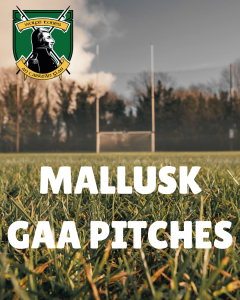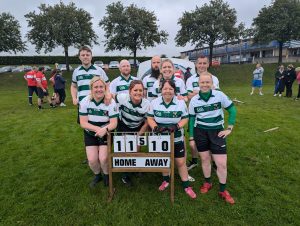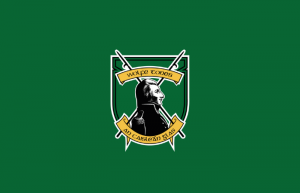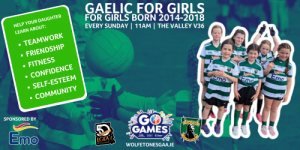What are Go Games?
GAA Go Games are Hurling/Camogie and Gaelic Football for children up to and including 11 years of age, where every child gets to play (a Go) in every game, for the full game.
For too long the practice in sport has been to identify and cultivate talented players and elite teams at younger and younger ages. There is a tendency to nurture the perceived best and neglect the rest.
This has contributed to adult training and playing conditions being imposed on young players. Training and competition are geared for outcome and not for the process of development. For children’s games, coaches must reassess the balance between the need to win games and cups versus the need to develop players and recognise the importance of fair play; i.e., provide full participation within an environment where participants are encouraged to achieve their full potential.
Children participate in Gaelic games for a number of reasons – to have fun, to play with friends, parental encouragement, etc. Lack of fun, lack of perceived competence and an over-emphasis on competitive outcomes (which usually come from coaches and parents) are major reasons for dropout.
Players can generally learn the basic skills of Football and Hurling/Camogie with relative ease. The better players who practise more often, come on faster than those who only participate in collective coaching sessions. However, players find it more difficult to develop the ability to make the right decisions – when to pass, whom to pass to, where to run, etc. – in full-sided games. Through small-sided games the aim is to optimise their decision-making and at the same time enhance their technical development.
Recent research conducted at DCU sheds light on the error of imposing traditional competitive models on young players who, during their formative years, are particularly susceptible to dropout.The study looked at the activity patterns and responses of children when playing small-sided games and 15-a-side games. The study found that, when participating in small-sided games, the children worked harder (as measured by heart rate), had more touches on the ball (catches, passes, lifts and scoring attempts), and expressed a greater level of enjoyment and perceived competence as compared with participation in 15-a-side games.
Go Games are national policy of the GAA under to Rule 6.27 of the Official Guide – This Rule states that ‘Games in the Under 11 and younger age groups shall be organised on the Go Games model, as approved by Central Council. Click here for the national policy. Go Games is also national policy of the LGFA and Camogie Association. The three Associations work closely together to promote and develop Go Games.
Go Games Playing Rules
The recommended Playing Rules for Go Games Hurling and Gaelic Football are provided overleaf. These are provided by way of best practice recommendations and can be adapted to meet localised needs. Where units from different counties play a game, these Playing Rules will be used – see pages 6 & 7 of the GAA Go Games Learning Resource for these.
Go Games Regulations
Go Games are subject to general rules of the Association.
- Teams shall be a maximum of 7-a-side at Under-6 & 7, 9-a-side at Under-8 & 9 and 11-a-side at Under-10 & 11 age levels.
- Participants may play up one age grade; i.e., Under-7 may play at Under-9 level; Under-9 may play at Under-11 level; Under-11 may play at Under-12 & Under-13 age levels.
- No provision is made to publish scores, to play on a knock-out basis nor to include semi-finals, finals, etc.
- No provision is made to present trophies, cups etc. Where certificates/medals are presented in lieu of participation, the same certificate/medal must be presented to every participant.



